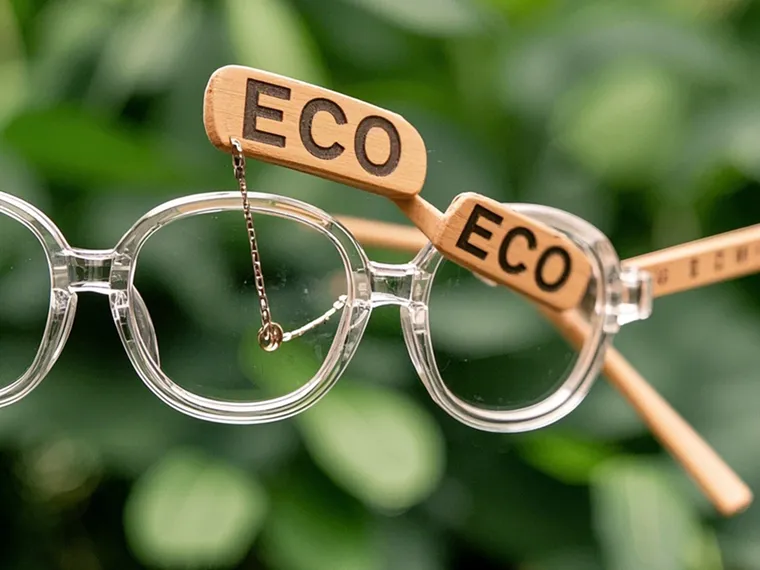The Rebirth of Ocean Plastic: How Abandoned Fishing Nets Become Eco-friendly Glasses

“The plastic garbage island in the Pacific Ocean is already three times the size of France – and this trash is making its way back into our lives in unexpected ways.”
When it comes to ocean pollution, many people think it’s far from them. But did you know that on average, each person consumes 5 grams of microplastics through the food chain every year (data from the journal Environmental Science & Technology), which is about the weight of a credit card? Today, let’s look at an amazing environmental story: how abandoned fishing nets turn into glasses that protect our eyesight.
I. Understanding Ocean Plastic: The Neglected “Underwater Killer”
What are ghost nets?
- Origin: Synthetic fiber fishing nets lost or discarded by fishing boats, which account for 10% of marine plastic waste.
- Harm:
- They can entangle marine life, causing the death of more than 300,000 cetaceans every year.
- When they gradually degrade, they produce microplastics that eventually enter our food chain.
(Turtle trapped in a fishing net, photographed by the World Wide Fund for Nature)
The “life cycle paradox” of plastic
Ordinary petroleum-based plastic products are used for about 3 years, but it takes 400 years to degrade! However, through recycling technology, they can find new uses:
- To make one pair of glasses frames, it takes about 3 square meters of discarded fishing nets from the sea area.
- Making ten frames is equivalent to cleaning up the fishing nets discarded by a small fishing boat in one year.
II. Recycling Science Lesson: Five Steps to Turn Waste into Treasure
- Location and Salvage: Use sonar to detect, and divers cooperate to clean up areas with many coral reefs first. Technical highlight: Use biodegradable marker buoys to avoid creating new pollution.
- Classification and Cleaning: Use high-pressure seawater to wash away parasitic organisms, then disinfect with ultraviolet light, and finally separate by material.
- Molecular Reconstruction: Reconnect the broken PET molecular chains through transesterification.
- 3D Molding: Use low-temperature melt printing technology, which is 67% more energy-efficient than the old method!
- Quality Renewal: Add some natural rattan fibers to make the frames stronger. This frame can withstand:
- A vertical pressure of 20 kg, which is about the weight of a 2-year-old humpback whale calf.
- A 1000-hour seawater immersion test.
III. What Changes Can Eco-friendly Glasses Bring?
At the individual level
- Reduce microplastic intake: Choosing products made of recycled materials can reduce the use of 0.8 kg of new plastic per year.
- New consumption values: Buying such products is also supporting ocean protection.
At the ecological level
- For every 100,000 pairs of glasses produced, about 12 tons of marine waste can be cleaned up, protecting an area of coral reefs about the size of 1.5 football fields.
- Promote the “active recycling” economic model: In the Philippines, fishermen can exchange 2 kg of rice for every 1 kg of fishing nets they salvage.
IV. Three Little-known Facts: Breaking Environmental Awareness Myths
❖ Recycled ≠ Low-quality: Laboratory data shows that after treatment, ocean plastic has 40% higher UV resistance than ordinary plastic!
❖ The Science Behind the Color: There are small spots on recycled frames. This is not poor workmanship but intentional. These “flaws” are like the tree rings, which can record the salinity data of the sea area where the materials come from.
❖ The Ultimate Destination of Glasses: After 5 years of use, you can send the glasses back to the factory:
- The frames can be crushed to make new things.
- The lenses can be separated and used to make protective films for solar panels.
Hands-on Experiment: Experience the Principle of Plastic Recycling at Home with Mineral Water Bottles
① Cut the bottle body into pieces → ② Put it in the oven and bake at 120°C for 30 minutes → ③ Press it into shape with a mold (Note: This experiment must be accompanied by an adult. Don’t touch high-temperature objects!)
V. How to Participate in this “Blue Revolution”?
- Consumer Choice: When buying things, check if there is an “Ocean Plastic Certified” certification mark.
- Daily Actions: Participate in coastline clean-up activities and pay more attention to collecting discarded fishing nets and buoys.
- Knowledge Dissemination: Tell your friends the differences between the two recycled plastics, “HDPE” and “PET”.
“When we put on glasses made from ocean plastic, what changes is not only our eyesight but also our perspective on the Earth.”






